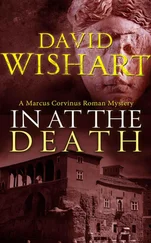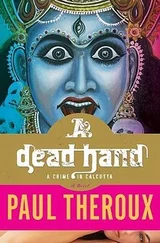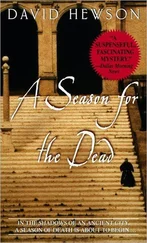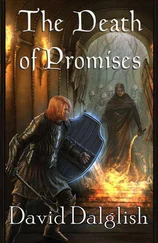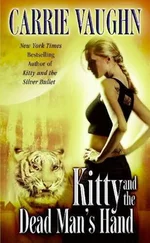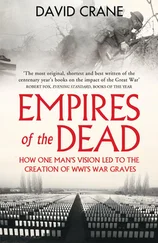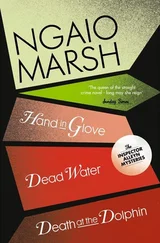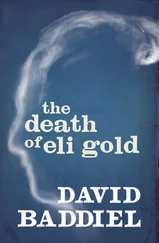In later years, many of the findings of Team B were found to have been overstated. Soviet missile accuracy and the pace of weapons modernization were exaggerated. But at the time, the conclusions seemed ominous, hammering another nail into the coffin of détente. In July 1977, Pipes wrote an article in the journal Commentary titled “Why the Soviet Union Thinks It Could Fight and Win a Nuclear War.” Soon after work was finished on Team B, Nitze, Pipes and others helped to found an advocacy group, the Committee on the Present Danger, to raise public alarm about the Soviet military buildup. The committee’s board included Ronald Reagan, the former California governor, who had presidential ambitions and a base of support among social, economic and defense conservatives. The committee campaigned from 1977 to 1979 against a SALT II treaty, then under negotiation, distributing maps showing the American cities that could be destroyed by a single Soviet SS-18 missile. 21
The Soviet leadership, with Brezhnev ailing, blundered in this period, deploying the SS-20 Pioneer, a new generation of medium-range missiles in Europe, apparently not anticipating that this would lead to apprehension in the United States and among its allies. NATO responded with a proposal to negotiate, but also to deploy Pershing II and ground-launched cruise missiles in Europe as a counterweight. A new arms race was getting underway. The leaders in Moscow stumbled again with the invasion of Afghanistan in December 1979. President Jimmy Carter, who had signed the SALT II treaty with Brezhnev, pulled back the treaty from the Senate, and détente was dead.
In the summer of 1980, Carter was facing a reelection challenge from Reagan and deepening tensions with Moscow. He approved two secret directives on nuclear war. Presidential Directive 58, signed June 30, called for a multibillion-dollar program to protect the president and other government leaders from a nuclear attack. Presidential Directive 59, signed July 25, put into effect a revised and expanded list of targeting choices a president would have at his disposal in the event of nuclear war. The new plan focused on attacking the Soviet political leadership, as well as military targets and war-supporting industry, and it envisioned limited nuclear strikes as well as a protracted conflict. Carter ordered upgrades for communications and improved satellites that would allow a president to choose military targets in real time after a nuclear exchange had begun. According to a senior Pentagon official, Presidential Directive 59 was developed in part to let the Soviet leadership know something very specific and frightening: they had been personally placed in the American nuclear crosshairs. 22
By 1982, the combined strategic arsenals of the superpowers held the explosive power of approximately 1 million Hiroshimas. Even with their huge arsenal, Soviet leaders feared they could perish in a decapitating missile attack before they had a chance to respond. They drew up plans for a system to guarantee a retaliatory strike. They envisioned a fully automatic system, known as the Dead Hand, in which a computer alone would issue the order to launch. But they had second thoughts, and instead created a modified system in which the decision to launch all the land-based missiles would be made by a small crew of duty officers surviving deep underground in a globe-shaped concrete bunker. The system was fully tested in November 1984 and placed on duty a few months later. At the climax of mistrust between the superpowers, one of them had built a Doomsday Machine.
The book is based on interviews, memoirs, diaries, news accounts and archival materials. An invaluable source was a collection of internal documents from the Defense Department of the Central Committee of the Communist Party of the Soviet Union. Revealed here for the first time, these papers shed new light on the decisions and thinking of key Soviet participants in the Gorbachev years. They show how Gorbachev stood up to the generals and the powerful military-industrial complex, and also how the Soviet Union concealed the germ warfare program. The papers were collected by Vitaly Katayev, an aviation and rocket designer by training. In 1974, Katayev was transferred from the missile complex in Dnepropetrovsk, Ukraine, to become a staff man on the Central Committee, in the heart of the Kremlin decision making, where he remained for almost two decades, often writing meticulous entries in his journals and preserving sheaves of original documents. Katayev knew the missiles, the designers and the political leaders. Like many others in this story, he came to realize, from his own experience, that the arms race had become a competition of colossal excess.
After the Soviet collapse in 1991, new and unexpected threats surfaced almost immediately. Rickety trains hauled nuclear warheads back from Eastern Europe and Central Asia into Russia; tons of highly enriched uranium and plutonium lay unguarded in warehouses; microbiologists and nuclear bomb designers were in desperate straits. This book traces the struggle of individuals to seize the moment and contain the danger. They were only partly successful. Today, the weapons to destroy civilization, the legacy of the Cold War, are still with us. They are the Dead Hand of our time, a lethal machine that haunts the globe long after the demise of the men who created it.
————— 1 —————
AT THE PRECIPICE
On July 31, 1979, Ronald Reagan walked through a pair of twenty-five-ton blast doors at Cheyenne Mountain, Colorado, headquarters of the North American Air Defense Command. Behind the doors were four and a half acres of chambers and tunnels surrounded by granite two thousand feet thick to shield it from an atomic bomb. Constructed of carbon steel plates, the fifteen buildings inside rested on 1,319 giant springs, each weighing approximately one thousand pounds, to cushion against shock. Built in the early 1960s, the complex was the nerve center of a system of satellites and radar for monitoring against a nuclear attack. 1
Reagan, who sought the Republican nomination in 1976 but lost to Gerald Ford, was preparing to run for president again. He had flown from Los Angeles for briefings about nuclear weapons. Martin Anderson, a policy adviser to the campaign, accompanied Reagan that day, along with Douglas Morrow, a screenwriter and producer who had known Reagan in his Hollywood days and suggested that Reagan see the facility. 2From the outside of the mountain, at the North Portal, entering a one-third-mile-long tunnel, Anderson recalled they didn’t think the complex looked very impressive. But once deep inside the mountain, standing in front of the huge blast doors, they began to sense the enormous scope. They were given briefings on the relative nuclear capabilities of the United States and the Soviet Union, and shown the command center, a room with a giant electronic map of North America. Anderson asked Air Force General James Hill, the commander, what would happen if a Soviet SS-18 missile were to hit within a few hundred yards of the command center. The Soviets had already deployed the SS-18 and an upgraded version was in flight tests. “It would blow us away,” Hill replied. When he heard this, “a look of disbelief came over Reagan’s face,” Anderson recalled. “The discussion continued, and we pressed the issue of what would really happen if the Soviets were to fire just one nuclear missile at a U.S. city.”
Hill replied that “we would pick it up right after it was launched, but by the time the officials of the city could be alerted that a nuclear bomb would hit them, there would be only ten or fifteen minutes left. That’s all we can do. We can’t stop it.”
Читать дальше

